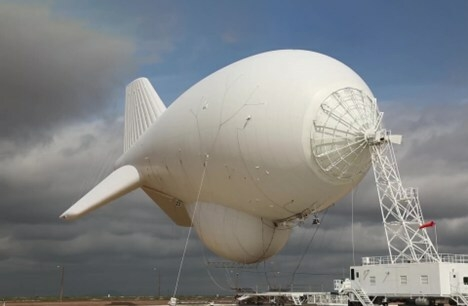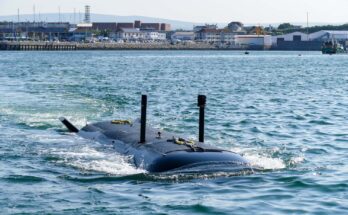
The U.S. State Department’s recent approval of a Foreign Military Sale to Poland of Airspace and Surface Radar Reconnaissance (ASRR) aerostat systems, is not only a big step in providing critical airborne early warning technology to the European nation but also a big boost to the U.S.-led, Combined Joint All-Domain Command and Control (CJADC2) effort.
On February 7, the Defense Security Cooperation Agency (DSCA) announced Poland’s request to buy the ASRR systems along with Airborne Early Warning (AEW) Radars with Identification of Friend or Foe (IFF) capability, electronic sensor systems, mooring systems with powered tether and embedded fiber optics, Ground Control Systems (GCS), and other associated equipment, in a deal estimated to cost $1.2 billion. The principal contractors will be Raytheon Intelligence and Space, TCOM, ELTA North America, and QinetiQ.
In November 2023, QinetiQ received a U.S. Department of Homeland Security Customs and Border Protection (CBP) Air and Marine (AMO) Tethered Aerostat Radar System (TARS) Operations & Maintenance III contract which might shed some light on the FMS to Poland.
Through the $170 million contract, the company will provide operations and sustainment efforts on the TARS program which will include aerostat operations, air-surface radar operations, ground control and data networking systems monitoring. According to QinetiQ, employing tethered aerostats, among other benefits, operators can relay vital data of suspicious activity in real-time.
As for CJADC2, technology like TARS may help provide what planners are looking for in their effort to facilitate interoperable command, control, communications and computers (C4) warfighting capabilities in all domains of operation. One of the program’s leading mandates is to foster global force integration and joint operations among NATO nations and other allies and partners.
In similar activity along these lines, September 2023, saw the U.S. DSCA approve an FMS to Poland of the Integrated Air and Missile Defense (IAMD) Battle Command System (IBCS) and related equipment for an estimated cost of $4 billion. The sale included 93 IBCS Engagement Operation Centers (EOCs) and 175 IBCS Integrated Fire Control Network (IFCN) relays.
In the U.S., the combined Air Force, Army, and Navy research and development efforts related to the sweeping command and control effort will likely see spending of over $9 billion into the next decade. While many programs support the program in one way or another, the three biggest, most driving efforts are the Air Force’s Advanced Battle Management System (ABMS), the Army’s Project Convergence, and the Navy’s Project Overmatch.
Andrew Dardine is lead analyst for Forecast International's Defense Electronic Systems group. He is the primary author of Forecast International's Electronic Warfare Forecast and co-author of Electro-Optical Systems Forecast and C4I Forecast. Andrew is also a regular contributor to FI's Defense & Security Monitor blog, offering insights into developing technologies such as directed-energy and next-generation jamming systems. His analysis of such vital market areas as EO/IR systems and electronic countermeasures technology has been cited in Defense News, Aerospace Daily, and Bloomberg Businessweek, among other news media. He has also written about the electronic defense market for Aviation Week and the Journal of Electronic Defense.




